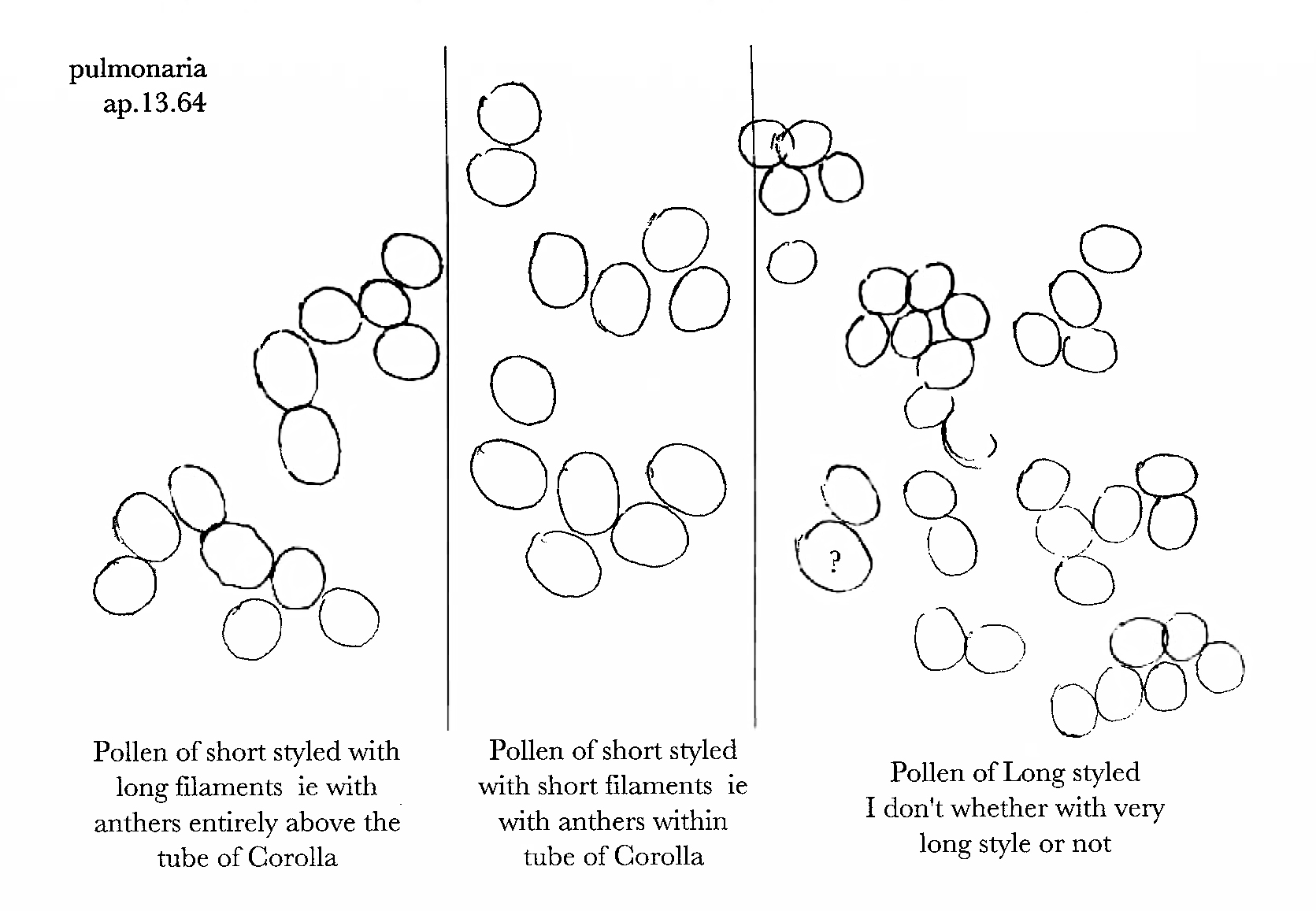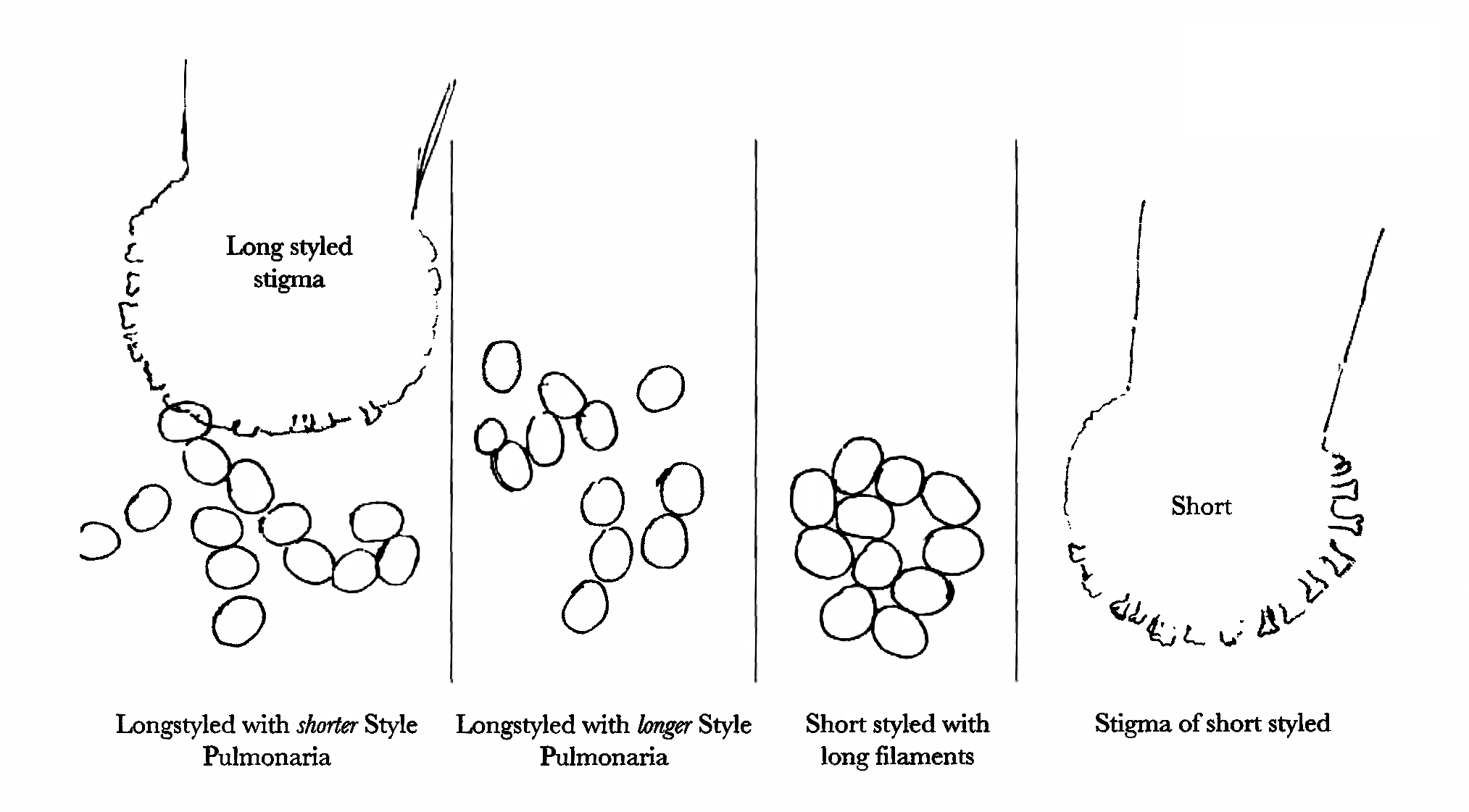From W. E. Darwin 14 April [1864]
Southampton
Ap. 14
My Dear Father,
I have already got some Pulmonaria & send it you measured.1
It seems variable both in length of style & length of filament but constant in each plant.2 I have unfortunately not got enough to compare all kinds properly.
They seem divided into 4 classes.
Short styled with short filaments
Do — Long filaments
Longstyled with long style
Do with shorter style
the only plant I had of short styled with short filaments has withered else I would have drawn them all ie. position of stamens & pistil. (The position of stamens in this seems the same as in long styled)3
The pollen in the 2 short styled kinds is exactly the the same, also in the 2 Longstyled, & you see the short styled pollen is decidedly the largest4 I have made two sets of drawings, so that I am sure there is no mistake.
I have drawn the stigmas of short & long, & the short have decidedly the longest papillæ.5 I will run over & get some more some evening6
I will see about the grass you mention.7
I shall come on Friday the 21st. & stay till Monday or Tuesday.8
Your affect son | W. E D.
I can do as much pollen work as ever you like
[Enclosure 1]

[Enclosure 2]

CD annotations
Footnotes
Bibliography
Correspondence: The correspondence of Charles Darwin. Edited by Frederick Burkhardt et al. 29 vols to date. Cambridge: Cambridge University Press. 1985–.
‘Dimorphic condition in Primula’: On the two forms, or dimorphic condition, in the species of Primula, and on their remarkable sexual relations. By Charles Darwin. [Read 21 November 1861.] Journal of the Proceedings of the Linnean Society (Botany) 6 (1862): 77–96. [Collected papers 2: 45–63.]
Forms of flowers: The different forms of flowers on plants of the same species. By Charles Darwin. London: John Murray. 1877.
‘Illegitimate offspring of dimorphic and trimorphic plants’: On the character and hybrid-like nature of the offspring from the illegitimate unions of dimorphic and trimorphic plants. By Charles Darwin. [Read 20 February 1868.] Journal of the Linnean Society of London (Botany) 10 (1869): 393–437.
‘Two forms in species of Linum’: On the existence of two forms, and on their reciprocal sexual relation, in several species of the genus Linum. By Charles Darwin. [Read 5 February 1863.] Journal of the Proceedings of the Linnean Society (Botany) 7 (1864): 69–83. [Collected papers 2: 93–105.]
Summary
Observations on [length of style and length of filament and stigmas of] Pulmonaria.
Letter details
- Letter no.
- DCP-LETT-4462
- From
- William Erasmus Darwin
- To
- Charles Robert Darwin
- Sent from
- Southampton
- Source of text
- DAR 110: A68–74
- Physical description
- ALS 5pp †, diags 5pp †
Please cite as
Darwin Correspondence Project, “Letter no. 4462,” accessed on 18 April 2024, https://www.darwinproject.ac.uk/letter/?docId=letters/DCP-LETT-4462.xml
Also published in The Correspondence of Charles Darwin, vol. 12


